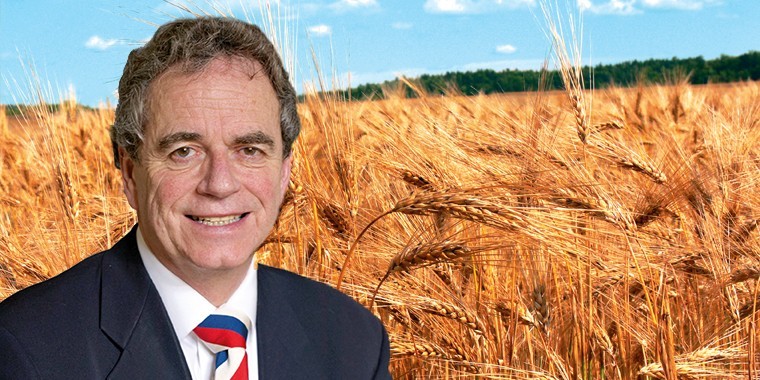In that period sterling has weakened from a euro exchange rate of 83p to 86.5p. Like it or not, Brexit has added about £10 per tonne in currency value alone to all cereals: with oilseed rape it’s much more.
This really is defying accepted wisdom that the UK is only a drop in the world ocean of wheat trade which usually says it doesn’t matter what happens to our crops or markets because the bigger world picture will dictate our values and fortune.
Well just now it isn’t! All this despite the United States Department of Agriculture (USDA) throwing everything, including the kitchen sink, at their last world crop updates in August. They shocked the whole trade by predicting record crops in American wheat, soya and maize.
They had reduced the French wheat crop, but have increased the Black Sea and Russian by a similar amount. But the trade just doesn’t believe it. It follows that futures should have weakened, but they went up instead for the next three days after the report. Sentiment is that they have massaged this figure to such a high level that the crops can only eventually get smaller.
The serious gamblers in the big hedge funds have made a lot of money by following USDA forecasts which developed into record harvest yields for both wheat and maize over the last two years. This is still going on: as of 22 August the funds had an open short position of 16.5 million tonnes of maize, on the Chicago futures market.
What makes this more risky is the rumours from real farming folk on the ground. They are still concerned about the above average high temperatures in July which may yet have reduced cob development. Some of the reason for the USDA optimism is that this is the third highest planted maize acreage since 1944. This could be one of the left field game changing events that could account for our firm wheat futures. Over the past few years world maize and wheat crops have started big and just got even bigger. Perhaps this year will be the exception.
As I ventured last month: say we are at five year average wheat yields, generating a surplus of 1.5 million tonnes. With good quality wheat we have the opportunity to export all sorts of milling, biscuit and enhanced feed. This may be another reason for our futures being firm. If everyone thinks their geese are swans there won’t be much real feed wheat about to meet existing sales. As I said in July, spring malting barley, being later and with the benefit of about four weeks sunshine, produced remarkably good samples.
It is hard to believe that this spring barley with big bold grain, high retention and low screenings could have come from the same harvest which produced such disastrous winter barley. In some areas yields are as good as the three year average. OK not all of the springs are good: the main problem is high skinning of barley corns. Some of this has been caused by over zealous rapid combining of sometimes unripe or high moisture barley, but the wet/dry weather early on weakened the natural glue which keeps the barley skin in place.
Keeping any post harvest handling to a minimum, avoiding drying and cleaning will help to preserve the fragile skins. All maltsters buy on maximum two per cent skinned grains. They will have to accept higher than this. We are now waiting to learn how high they will go and what the allowances will be.
In summary: smaller EU and UK crops are allowing – for the time being – the UK market to be detached from the huge residual world stock, and still forecast big crops elsewhere. So far so good – let’s enjoy it while we can. I did correctly forecast the mega rise in oilseed rape value and unfortunately there is none left to trade now. Wheat has surprised us all with good quality and average yields. While milling premiums have decreased for now, it will be difficult for millers to obtain imports from Germany/Denmark – as they have been affected by poor weather – and imports from elsewhere will be very expensive because of the exchange rate.
For us, the tail which is now wagging the dog of the bigger market originates from an area between Munich in Germany and Nante in France and say 150 kilometres north and south of that line. That is a relatively small area to be having such an affect on our market. Unless there are some other big problem areas in the bigger world, the effect won’t last.




